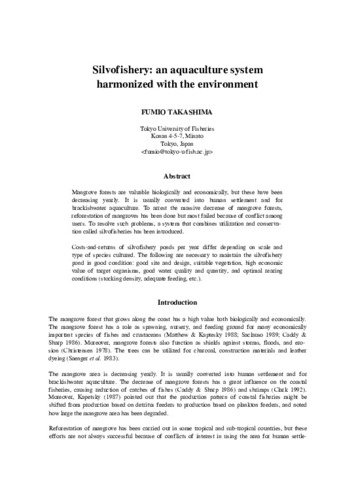Silvofishery: An aquaculture system harmonized with the environment
Share
Abstract
Mangrove forests are valuable biologically and economically, but these have been decreasing yearly. It is usually converted into human settlement and for brackishwater aquaculture. To arrest the massive decrease of mangrove forests, reforestation of mangroves has been done but most failed because of conflict among users. To resolve such problems, a system that combines utilization and conservation called silvofisheries has been introduced.
Costs-and-returns of silvofishery ponds per year differ depending on scale and type of species cultured. The following are necessary to maintain the silvofishery pond in good condition: good site and design, suitable vegetation, high economic value of target organisms, good water quality and quantity, and optimal rearing conditions (stocking density, adequate feeding, etc.).
Suggested Citation
Takashima, F. (2000). Silvofishery: an aquaculture system harmonized with the environment. In J. H. Primavera, L. M. B. Garcia, M. T. Castaños, & M. B. Surtida (Eds.), Mangrove-Friendly Aquaculture : Proceedings of the Workshop on Mangrove-Friendly Aquaculture organized by the SEAFDEC Aquaculture Department, January 11-15, 1999, Iloilo City, Philippines (pp. 13–19). Tigbauan, Iloilo, Philippines: Southeast Asian Fisheries Development Center, Aquaculture Department.


